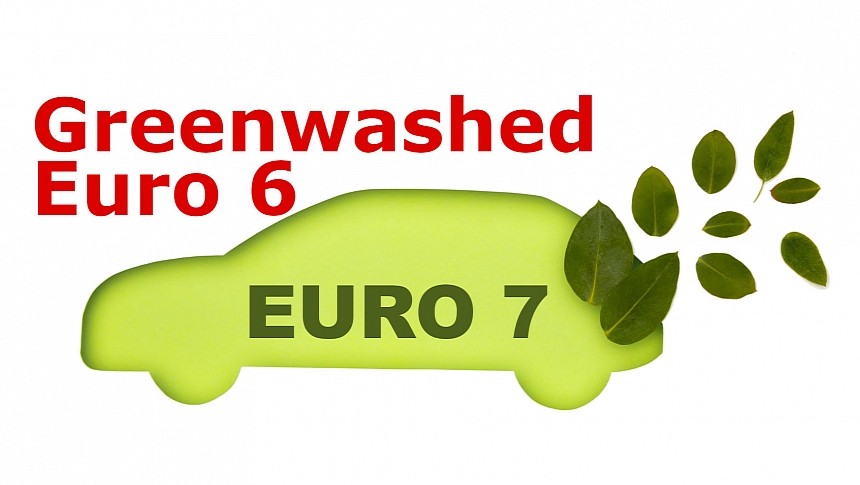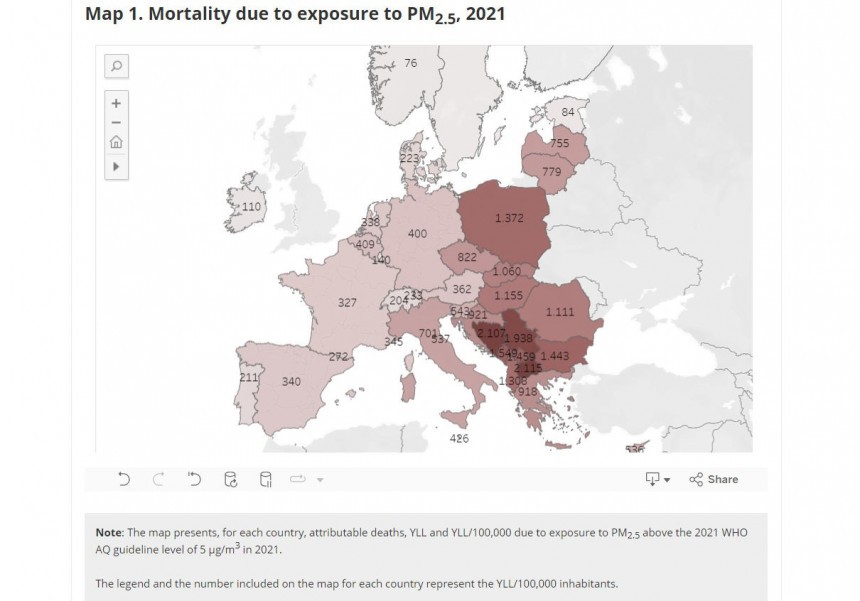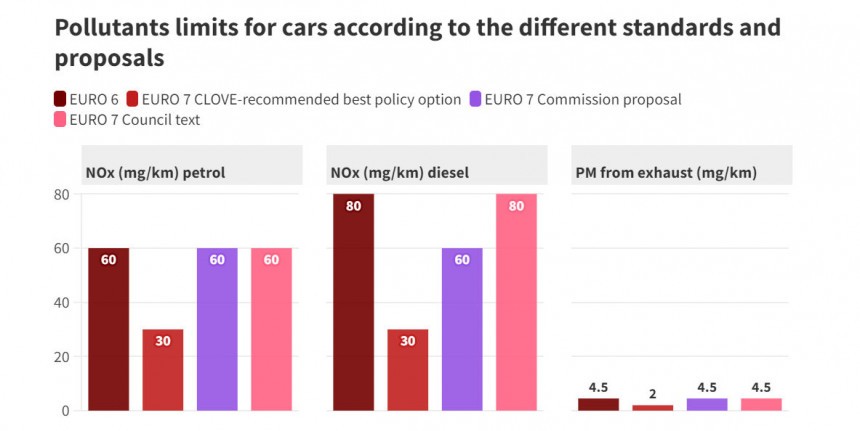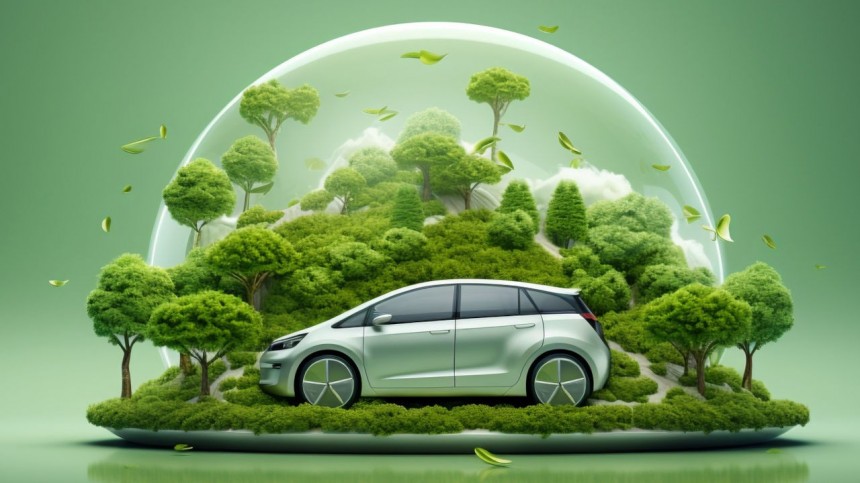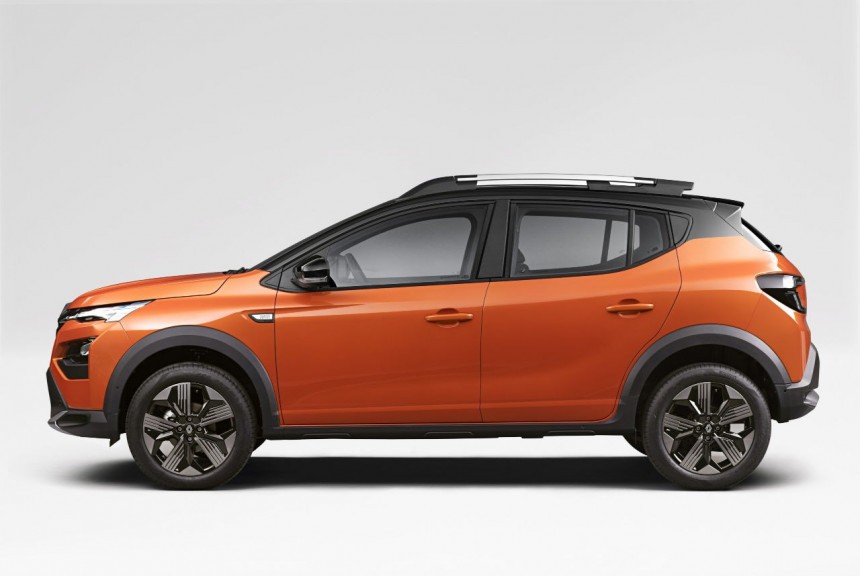I'm slightly confused: is this a sick movie where society must offer sacrifices on the auto industry altar for the greater good? Watering down the proposed stricter Euro 7 norms will result in 7,300 premature deaths and €100 billion in health and environmental costs by 2050, according to ICCT.
Of course, these are just estimates; no one can tell for sure that the International Council on Clean Transportation's predictions will be accurate. Strictly by the numbers, those values translate to around 270 premature deaths and about €3.7 billion in yearly losses.
This may be a fair compromise from the perspective of auto industry leaders. After all, the numbers are all that matters to them. People – or, more precisely, victims – are just numbers. Cold statistics, like the number of civilians killed by the Russian army in Ukraine starting on February 24, 2022, or the number of civilians killed in Israel by Hamas's cruel attack on October 7.
This may be a fair compromise from the perspective of auto industry leaders. After all, the numbers are all that matters to them. People – or, more precisely, victims – are just numbers. Cold statistics, like the number of civilians killed by the Russian army in Ukraine starting on February 24, 2022, or the number of civilians killed in Israel by Hamas's cruel attack on October 7.
There's a simple math of how much the industry has to spend to reduce road transport pollution as much as possible versus how high the cost is for society.
So, what's the impact of pollution on Europeans?
Data from the European Environment Agency suggest that hundreds of thousands of premature deaths are attributable to pollutant concentrations above the levels recommended by the World Health Organization (WHO). Mainly fine particulate matter (PM2.5), nitrogen dioxide (NO2), and ozone (O3).
To put things in perspective, WHO guidelines recommend a maximum of 10 micrograms per cubic meter for NO2 particles, but the current EU limit value is four times higher. You should not be surprised that in 2021, there were an estimated 52,000 premature deaths because of this pollutant. Another 22,000 premature deaths were caused by ozone.
But the most effective killer is particulate matter: more than 250,000 Europeans died prematurely in 2021 because of PM2.5. You already know why: WHO recommends a five µg/m³ limit, but the current EU limit value is five times higher.
Basically, the primary pollutants resulting from burning fossil fuels and intensive agriculture led to almost 400,000 Europeans dying prematurely in 2021. Is this a significant number? From a statistical point of view, it's not.
Some 4.5 million Europeans die every year because they're old or they're sick. That's just 1% of the total population of the EU. So, the number of premature deaths because of air pollution translates to an insignificant 0.1% of UE's total population.
But do you know what's more insignificant? 70,000 yearly premature deaths are attributed to road transport pollution in the EU – a mere 0.01% of UE's total population. I mean, the risk for you or me to die because of ICE cars' tailpipe emissions is negligible, right?
I could say that we need air to breathe to live, so air pollution is not a small thing. But I'm afraid that the car industry's slick lobbyists will accuse me that this is not an objective answer backed by numbers and hard evidence. After all, statistics can prove me wrong: not every smoker dies from lung cancer, so smoking is not that dangerous.
To put things in perspective, WHO guidelines recommend a maximum of 10 micrograms per cubic meter for NO2 particles, but the current EU limit value is four times higher. You should not be surprised that in 2021, there were an estimated 52,000 premature deaths because of this pollutant. Another 22,000 premature deaths were caused by ozone.
But the most effective killer is particulate matter: more than 250,000 Europeans died prematurely in 2021 because of PM2.5. You already know why: WHO recommends a five µg/m³ limit, but the current EU limit value is five times higher.
Some 4.5 million Europeans die every year because they're old or they're sick. That's just 1% of the total population of the EU. So, the number of premature deaths because of air pollution translates to an insignificant 0.1% of UE's total population.
But do you know what's more insignificant? 70,000 yearly premature deaths are attributed to road transport pollution in the EU – a mere 0.01% of UE's total population. I mean, the risk for you or me to die because of ICE cars' tailpipe emissions is negligible, right?
I could say that we need air to breathe to live, so air pollution is not a small thing. But I'm afraid that the car industry's slick lobbyists will accuse me that this is not an objective answer backed by numbers and hard evidence. After all, statistics can prove me wrong: not every smoker dies from lung cancer, so smoking is not that dangerous.
Let's not make Euro 7 more strict, shall we?
I was partly disappointed and outraged when the car industry persuaded EU officials to exempt e-fuel ICEs from phasing out in 2035. But now I'm simply dazzled by this new blow: EU officials once again favored the industry's stance and agreed not to enforce stricter limits for the new Euro 7 pollution standards.
Recent investigations from Voxeurop and The Guardian reveal a petty picture where politicians simply pave the way for the economic interests of the auto industry against the strong advice from Clove's consultants.
The Consortium for Ultra-low Vehicle Emissions' members are academic, research, and business experts whose job is to examine the most effective policies for regulating car emissions. This time, politicians ignored Clove's expertise and made significant compromises after intensive lobbying from the auto industry.
In the "new Euro 7" form, limits for nitrogen dioxide, ultrafine particles, and other harmful pollutants would be practically unchanged from current Euro 6 emissions standards. Moreover, the approval tests wouldn't change significantly, which results in large gaps between lab results and real-world emissions.
However, the Euro 7 will bring in a totally new set of measurements for particles from tires and brakes. It's the first time these are regulated, so naturally, there's a never-ending debate on the subject. This conveniently moves the focus from tailpipe emissions limits not being stricter than Euro 6.
I'm sure you remember that the car industry complained that the initial stricter Euro 7 proposal was "entirely disproportionate, driving high costs for industry and customers with limited environmental benefits."
Volkswagen and Ford warned that the popular Polo and Fiesta would be axed because the costs to align them to stricter rules would increase by thousands of euros, making them unaffordable for the large public. That contradicted Clove's experts' estimations of only a few hundred euros per car.
Recent investigations from Voxeurop and The Guardian reveal a petty picture where politicians simply pave the way for the economic interests of the auto industry against the strong advice from Clove's consultants.
In the "new Euro 7" form, limits for nitrogen dioxide, ultrafine particles, and other harmful pollutants would be practically unchanged from current Euro 6 emissions standards. Moreover, the approval tests wouldn't change significantly, which results in large gaps between lab results and real-world emissions.
However, the Euro 7 will bring in a totally new set of measurements for particles from tires and brakes. It's the first time these are regulated, so naturally, there's a never-ending debate on the subject. This conveniently moves the focus from tailpipe emissions limits not being stricter than Euro 6.
I'm sure you remember that the car industry complained that the initial stricter Euro 7 proposal was "entirely disproportionate, driving high costs for industry and customers with limited environmental benefits."
Volkswagen and Ford warned that the popular Polo and Fiesta would be axed because the costs to align them to stricter rules would increase by thousands of euros, making them unaffordable for the large public. That contradicted Clove's experts' estimations of only a few hundred euros per car.
Who's right, and who's right?
According to Clove's estimates, their more-strict-Euro-7-version would have required around €30 billion in investments from the auto industry to make ICE vehicles cleaner. Industry's lobbyists fought back and claimed that the sum would be at least ten times larger. It's considered unbearable, as the industry has already poured around €250 billion into electrification.
As I showed you before, numbers are cold and objective. Therefore, they made a significant impact on politicians. I won't mention a little detail: the millions of those who work in the European car industry are also voters, and politicians can't afford to ignore or upset them just to prevent some premature deaths.
Clove's experts base their estimations on solid data from "all stakeholders, including carmakers and automotive suppliers." This is how they concluded that stricter Euro 7 standards could have brought around €182 billion in benefits to the EU inhabitants.
But now, they estimate weaker Euro 7 standards "could cost up to €100 billion in health and environmental damage by 2050." Which is three times more than the money the car industry should invest to make cleaner cars – according to Clove.
Of course, the car industry's lobbyists disagree, but who can really check if their claims are valid? No one, indeed. However, Transport & Environment NGO put some extra fuel on fire, debunking the car industry's claim that the costs to adapt cars to stricter Euro 7 are too high.
As I showed you before, numbers are cold and objective. Therefore, they made a significant impact on politicians. I won't mention a little detail: the millions of those who work in the European car industry are also voters, and politicians can't afford to ignore or upset them just to prevent some premature deaths.
Clove's experts base their estimations on solid data from "all stakeholders, including carmakers and automotive suppliers." This is how they concluded that stricter Euro 7 standards could have brought around €182 billion in benefits to the EU inhabitants.
Of course, the car industry's lobbyists disagree, but who can really check if their claims are valid? No one, indeed. However, Transport & Environment NGO put some extra fuel on fire, debunking the car industry's claim that the costs to adapt cars to stricter Euro 7 are too high.
Selling less but making record profits
According to the T&E analysis based on financial data of Europe's five biggest carmakers (Volkswagen, Stellantis, BMW, Mercedes-Benz, and Renault), profits were slashed in 2020 because of the Covid-19 crisis, but in 2021 they rebounded to record highs.
In short, the five carmakers doubled their profits in 2022 compared to 2019 despite the 25% decrease in total sales. Business plans emphasized strategies to steer from selling many mass-market cars to selling fewer premium and more profitable larger cars.
Reading between the lines, one can easily understand that carmakers simply favor crossovers and SUVs. This is why, between you and me, city cars like Polo and Fiesta are doomed – but, hey, for ACEA, it was so convenient to blame Euro 7: "It comes with a heavy price tag and at a very critical juncture in the industry's transformation."
By the way, a recent report of GFEI (Global Fuel Economy Initiative, "a partnership of expert groups to support governments to set policies for cleaner and more efficient vehicles") warns that because of the rapid rise of SUVs' share in total sales – which is now 51% of new car sales globally – CO2 emissions were reduced by only 4.2% in the 2010-2022 period.
GFEI estimates that CO2 emissions would have been slashed by at least 30% if carmakers favored regular cars. I didn't look for an analysis regarding the rise in profits carmakers benefited from favoring SUVs.
But what's striking in the GFEI report is their conclusion that carmakers made big improvements in ICE's efficiency in the last decade. Consequently, while SUVs are more expensive than the regular cars they are based on, the cost increase is minimal. This is why profits are rising, despite all the problems carmakers complain about repeatedly.
In short, the five carmakers doubled their profits in 2022 compared to 2019 despite the 25% decrease in total sales. Business plans emphasized strategies to steer from selling many mass-market cars to selling fewer premium and more profitable larger cars.
Reading between the lines, one can easily understand that carmakers simply favor crossovers and SUVs. This is why, between you and me, city cars like Polo and Fiesta are doomed – but, hey, for ACEA, it was so convenient to blame Euro 7: "It comes with a heavy price tag and at a very critical juncture in the industry's transformation."
By the way, a recent report of GFEI (Global Fuel Economy Initiative, "a partnership of expert groups to support governments to set policies for cleaner and more efficient vehicles") warns that because of the rapid rise of SUVs' share in total sales – which is now 51% of new car sales globally – CO2 emissions were reduced by only 4.2% in the 2010-2022 period.
But what's striking in the GFEI report is their conclusion that carmakers made big improvements in ICE's efficiency in the last decade. Consequently, while SUVs are more expensive than the regular cars they are based on, the cost increase is minimal. This is why profits are rising, despite all the problems carmakers complain about repeatedly.
Maybe negotiating is the art of dealing with the devil
Ultimately, I only hope that The Guardian's sources are solid. I'm talking about those sources claiming that the EU agreed to water down Euro 7 standards in exchange for the car industry's promise (or "an unspoken deal") to phase out all internal combustion engines entirely in 2035.
This means no exemption for e-fuels ICEs, as Germany required earlier this year. Maybe BMW concluding the production of ICEs at its Munich factory is a clue, but I'm just speculating. As I said several times, I don't believe in e-fuel propaganda, and now it kind of looks like a planned hoax to be used as a trade-off for Euro 7.
Forgive me if I sound like a sorry-ass conspiracy theory fan. Recent developments in the car industry are pretty peculiar. Ok, I can accept we need compromises to make the right decision finally, but I worry if you lie down with the devil, you wake up in hell.
This means no exemption for e-fuels ICEs, as Germany required earlier this year. Maybe BMW concluding the production of ICEs at its Munich factory is a clue, but I'm just speculating. As I said several times, I don't believe in e-fuel propaganda, and now it kind of looks like a planned hoax to be used as a trade-off for Euro 7.
Forgive me if I sound like a sorry-ass conspiracy theory fan. Recent developments in the car industry are pretty peculiar. Ok, I can accept we need compromises to make the right decision finally, but I worry if you lie down with the devil, you wake up in hell.
